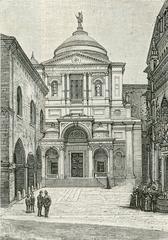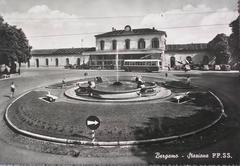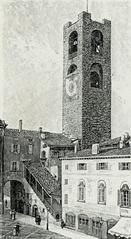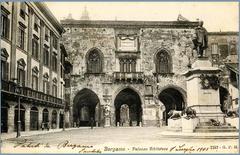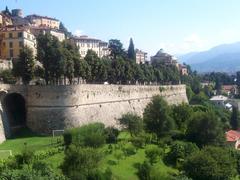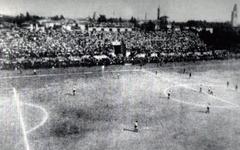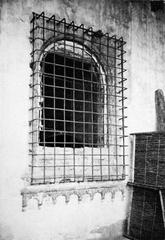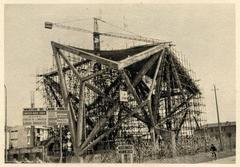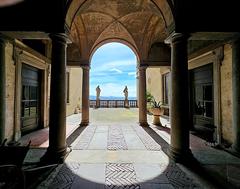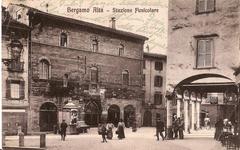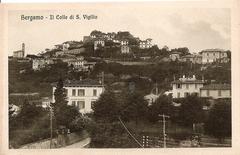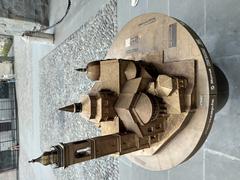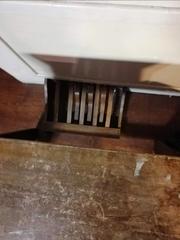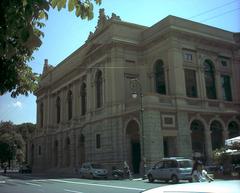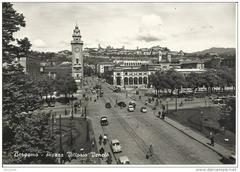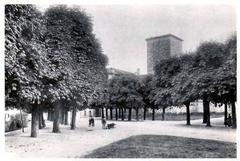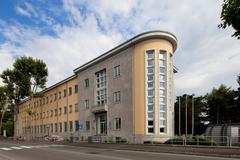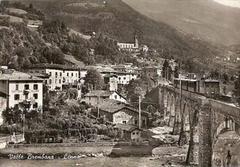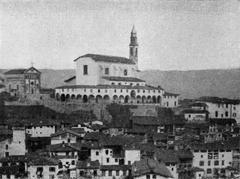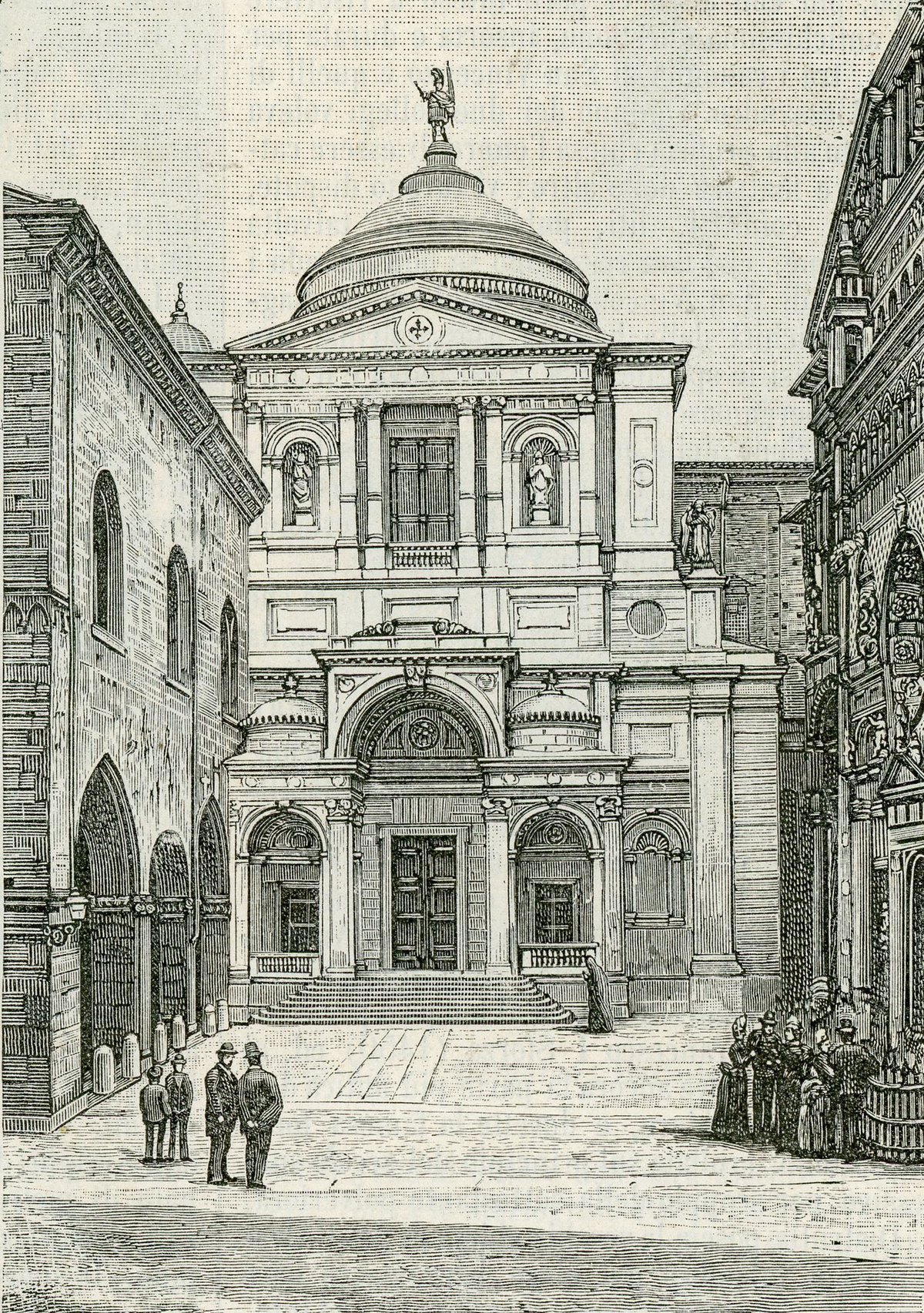
Bergamo Cathedral Visiting Hours, Tickets, and Travel Guide
Date: 14/06/2025
Introduction: Bergamo Cathedral’s History and Cultural Significance
Nestled in the heart of Bergamo’s historic Città Alta (Upper Town), Bergamo Cathedral—locally known as Duomo di Bergamo or the Cathedral of Sant’Alessandro—stands as a monumental symbol of religious devotion, artistic achievement, and architectural evolution. The cathedral not only serves as the sacred resting place of Saint Alexander, Bergamo’s patron saint, but also encapsulates the city’s layered history—spanning from early Christian worship in the 5th century through Renaissance and Baroque artistic flourishes, culminating in its 19th-century neoclassical façade.
Visitors can journey through archaeological remnants beneath the cathedral, Renaissance designs by Filarete, and masterpieces by renowned artists like Giovan Battista Moroni, Giovanni Battista Tiepolo, and Andrea Previtali. The adjoining Museo della Cattedrale further enriches the experience, showcasing the cathedral’s architectural evolution and historic treasures.
This guide provides essential information on Bergamo Cathedral visiting hours, tickets, accessibility, and travel tips. It highlights nearby must-see sites such as the Basilica di Santa Maria Maggiore and the Colleoni Chapel, ensuring a comprehensive exploration of Bergamo’s cultural heritage. Whether you are a history enthusiast, art lover, pilgrim, or traveler, Bergamo Cathedral offers an unforgettable encounter with faith, art, and history (Visit Bergamo; Italia.it; Bergamo by Tuk Tuk).
Quick Contents Navigation
- Introduction
- Historical Overview
- Early Origins and Foundations
- Medieval Rivalry: Two Cathedrals
- Renaissance and Baroque Evolution
- Venetian Rule and Cathedral Unification
- Artistic Enrichment
- 19th-Century Renovations and Modern Additions
- Architectural Evolution and Styles
- Interior Highlights and Notable Artworks
- The Colleoni Chapel
- Visiting Information: Hours, Tickets, and Tips
- Accessibility and Visitor Services
- Nearby Attractions
- Rituals, Festivals, and Community Life
- FAQs
- Conclusion and Travel Planning Resources
Historical Overview
Early Origins and Foundations
The site of Bergamo Cathedral has served as a place of worship since at least the 5th century AD, with underground layers revealing even earlier sacred use (Visit Bergamo). Early Christian presence is linked to Roman prisoners from the East, “Damnati ad Metalla,” who brought Christianity to the region. The first substantial church, dedicated to San Vincenzo (Saint Vincent of Saragossa), was built in the 8th century (italyscapes.com).
Medieval Rivalry: Two Cathedrals
From the 9th century, Bergamo uniquely hosted two cathedrals: the Basilica of Saint Alexander (Sant’Alessandro), on the patron saint’s martyrdom site, and San Vincenzo on the current cathedral’s site (spottinghistory.com). These rival churches reflected both religious devotion and civic pride.
Renaissance and Baroque Evolution
In the mid-15th century, Bishop Giovanni Barozzi commissioned a new cathedral, designed by Filarete (Antonio di Pietro Averlino), whose Renaissance vision introduced symmetry and grandeur (italyscapes.com). Over time, chapels and artistic decorations were added, reflecting Renaissance and later Baroque tastes.
Venetian Rule and Cathedral Unification
Venetian authorities demolished the Basilica of Saint Alexander in 1561 to build defensive walls (Visit Bergamo). San Vincenzo was renamed Sant’Alessandro, becoming Bergamo’s sole cathedral and centralizing its religious life.
Artistic Enrichment
The cathedral houses masterpieces by:
- Giovan Battista Moroni: Renaissance portraits and religious works
- Andrea Previtali: 1524 painting of St. Benedict and Saints
- Giovanni Battista Tiepolo: “Martyrdom of Bishop Saint John of Bergamo” (1731–1743)
- Carlo Innocenzo Carloni: Depiction of Saint Alexander
- Giovanni Cariani: “Madonna with Child with Two Doves”
- Sebastiano Ricci: “Saints Firmus, Rusticus, and Proculus” (1704)
- Filippo Juvarra: Design of the main altar
- Johann Karl Sanz and Andrea Fantoni: Baroque wooden choir and marble inlays (Visit Bergamo)
19th-Century Renovations and Modern Additions
Significant 19th-century updates included the white marble façade (1866–1889), bell tower, dome, and Chapel of the Crucifix (italyscapes.com). The Museo della Cattedrale, opened in 2012, allows exploration of the site’s archaeological layers.
Architectural Evolution and Styles
Bergamo Cathedral reflects centuries of transformation. Its earliest Romanesque structure featured thick walls and rounded arches, later augmented with Gothic pointed arches and ribbed vaults. The Renaissance brought a focus on symmetry and classical harmony, culminating in the luminous 19th-century neoclassical façade in white Botticino marble (Bergamo by Tuk Tuk; finestresullarte.info).
Recent archaeological excavations (2004–2012) have unearthed early Christian churches and Roman roads under the cathedral, illustrating the site’s enduring sacred significance.
Interior Highlights and Notable Artworks
The cathedral’s nave and side chapels serve as a living museum of sacred art, featuring:
- Baroque wooden choir: Crafted by Johann Karl Sanz and Andrea Fantoni
- Altarpieces: By Carlo Ceresa and others
- Frescoes: By Tiepolo, Moroni, and Cariani
- Sculpture: Statues of saints and biblical figures in marble and wood
- Tiara of Pope John XXIII: Created by Attilio Nani, adorned with pearls and brilliants (finestresullarte.info)
The Colleoni Chapel
Adjacent to the cathedral, the Colleoni Chapel was built in the 15th century as the mausoleum of Bartolomeo Colleoni, a famous condottiero. Its polychrome marble façade and the polyptych by Lorenzo Lotto make it a masterpiece of Renaissance art (Bergamo by Tuk Tuk).
Visiting Bergamo Cathedral: Hours, Tickets, and Tips
Visiting Hours
- Monday to Saturday: 7:00 AM – 7:00 PM
- Sunday & Holidays: 10:00 AM – 6:30 PM
Hours may vary on religious holidays; check the official website for updates.
Tickets and Admission
- Cathedral: Free entry; donations welcome
- Museo della Cattedrale: €3–5 entrance fee
Accessibility
- Wheelchair accessible via main entrance
- Some museum areas may have limited access due to historic structures
- Multilingual signage and information available
Guided Tours
- Offered in English and Italian
- Combine the cathedral, museum, and Colleoni Chapel
- Book online or at tourist offices (Bergamo Tourist Office)
Photography and Dress Code
- Photography allowed without flash or tripod
- Modest attire required (shoulders and knees covered)
How to Get There
- By funicular: From Lower Town to Città Alta
- On foot: Via historic streets
- Public transport: Bus routes and taxis available
- Parking: Limited in Upper Town—use public transport when possible
Practical Visitor Tips
- Best time to visit: Early mornings or late afternoons for a peaceful atmosphere
- Visitor etiquette: Keep voices low, silence phones, avoid photography during services
- Amenities: Cafés and restaurants available in Piazza Duomo and Piazza Vecchia
- Safety: Bergamo is safe, but be vigilant for pickpockets in busy areas (wanderlustandlife.com)
Nearby Attractions
- Basilica di Santa Maria Maggiore: Renowned for its Baroque interiors
- Colleoni Chapel: Renaissance mausoleum
- Piazza Vecchia: Main square with cafés and historical sites
- Palazzo della Ragione: Medieval civic palace
- Campanone (Civic Tower): Panoramic city views
Rituals, Festivals, and Community Life
- Feast of Saint Alexander: August 26th, featuring processions and special Masses
- Regular Masses and Sacraments: Daily worship, with extended hours during major religious seasons
- Special Events: Organ recitals, art exhibitions, and community outreach programs
FAQs
Q: What are the Bergamo Cathedral visiting hours?
A: Open daily, typically from 7:00 AM to 7:00 PM; Sundays and holidays from 10:00 AM to 6:30 PM.
Q: Is there an entrance fee?
A: Cathedral entry is free; museum entry is €3–5.
Q: Are guided tours available?
A: Yes, in multiple languages; booking in advance is recommended.
Q: Is the cathedral wheelchair accessible?
A: Yes, via the main entrance; some museum areas may be limited.
Q: Can I take photos?
A: Yes, without flash or tripod; restrictions may apply in the museum and during services.
Q: What is the best time to visit?
A: Early mornings or late afternoons for fewer crowds; festivals for special atmosphere.
Plan Your Visit
For the latest updates on Bergamo Cathedral visiting hours, tickets, and special events, visit the official website, Museo della Cattedrale, and Bergamo Tourist Office. Download the Audiala app for exclusive audio tours and interactive maps. For further inspiration, read more on in-lombardia.it, placesofjuma.com, and foreveroutofoffice.co.uk.
Visuals and Accessibility
- Images:
- Façade and Piazza Duomo (alt: “Bergamo Cathedral neoclassical façade at Piazza Duomo”)
- Interior nave and artworks (alt: “Bergamo Cathedral interior with frescoes and altar”)
- Archaeological museum exhibits (alt: “Archaeological exhibits in Bergamo Cathedral museum”)
- Maps:
- Interactive maps highlighting the cathedral and nearby attractions
Summary: Key Points and Travel Tips
Bergamo Cathedral stands as a testament to the city’s evolving spiritual and artistic identity. With free admission, extensive opening hours, and a central location in Città Alta, it is accessible to all visitors. The cathedral’s treasures—from Saint Alexander’s relics and Pope John XXIII’s tiara to masterpieces by Tiepolo and Moroni—are complemented by the engaging Museo della Cattedrale. Early mornings and late afternoons offer the most serene experiences, and guided tours are highly recommended. Modest attire and respectful behavior enhance the sacred ambiance.
For a holistic exploration, include nearby sites such as the Basilica di Santa Maria Maggiore and the Colleoni Chapel in your itinerary. Stay updated with the latest visiting hours and special events through official resources, and consider downloading the Audiala app for expert guidance. Bergamo Cathedral promises a memorable journey through faith, art, and history in the heart of Lombardy (Visit Bergamo; Italia.it; Bergamo by Tuk Tuk).
References and Further Reading
- Visit Bergamo – Bergamo Cathedral
- Bergamo by Tuk Tuk – Duomo of Bergamo
- Italia.it – Duomo di Bergamo
- Salt in Our Hair – Bergamo Cathedral
- Catholic Shrine Basilica – Cathedral Basilica of St. Alexander
- in-lombardia.it – Duomo of Bergamo
- placesofjuma.com – Things to Do in Bergamo
- foreveroutofoffice.co.uk – 1 Day in Bergamo
